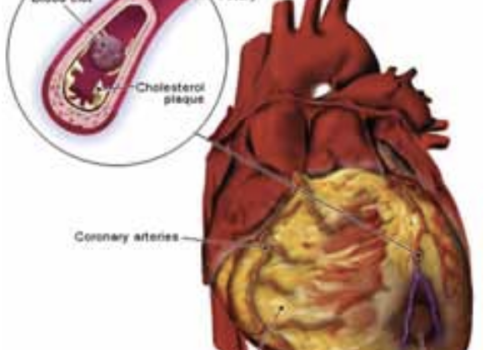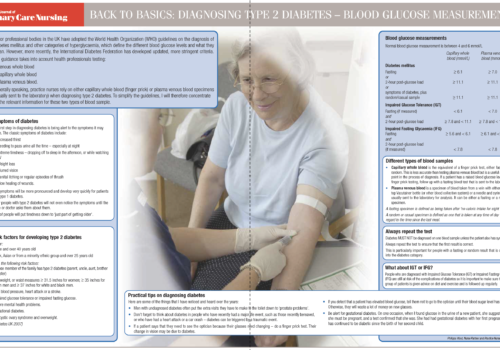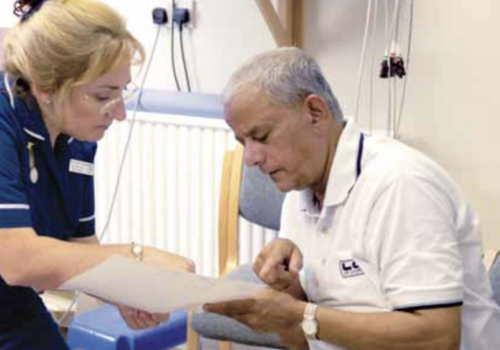Angina is on the increase as people live longer. It is the most common symptom of ischaemic heart disease and occurs when the arteries are no longer able to supply the heart with enough blood to meet its demands. Treatment aims to restore the balance between oxygen supply and demand, to relieve the pain as quickly as possible and prevent further angina attacks, to treat the risk factors, limit the progression of coronary artery disease and reduce the risk of a heart attack. Procoralan (ivabradine) works by specifically inhibiting the If or ‘funny’ channel in the sinoatrial node of the heart (also known as the cardiac pacemaker) to reduce the resting heart rate, matching the efficacy of beta-blockers without their side-effects.
Neurolinguistic Programming: Getting to the Heart of Communication
Imagine what it would be like if you could communicate effectively with every person you meet. What would it be like to know that any messages you want to put across to your patients mean the same to them when they hear them as they mean to you? A few basic pointers in neurolinguistic programming (NLP) may help to improve how clearly you communicate with others. In this article we will look at linguistics, or the use of language, as one part of NLP and a key indicator of how people make sense of, and interpret, the world.
A spoonful of sugar: helping older patients to take their medicines
As people get older, their use of medications tends to rise and elderly patients often take a variety of medicines for an increasing number of health problems. Four in five people over the age of 75 years take at least one prescribed medication, while 36% are taking four or more, according to the 1998 Health Survey for England. How can we help our older patients to take their medicines, optimising convenience and minimising risks of non-compliance and sideeffects?
Primary angioplasty: the best way to unblock arteries after a heart attack?
Primary angioplasty is now recognised as the best treatment for clearing a blocked coronary artery after an ST segment elevation myocardial infarction (STEMI) and increasing numbers of patients will undergo this procedure as it becomes more available. In this article, we explore what is involved in primary angioplasty, what you need to tell to your patients and how to care for them after this procedure.
Helping patients to lose weight: best practice for primary care
Obesity poses a major threat to the nation’s health and a national strategy is required to stem the rising prevalence, decrease the morbidity and mortality from associated conditions, and reduce pressure on the National Health Service. Primary healthcare staff will be at the centre of any such approach. Practice nurse-led lifestyle clinics have demonstrated that clinically beneficial weight loss can be achieved with a structured approach to weight management. In this article, we explore the impact of obesity and best practice strategies to help patients lose weight.
Atrial fibrillation: giving your patients the best care
Atrial fibrillation (AF) is a condition that we are seeing more and more in general practice, with the increasingly ageing population. It is an important risk factor for stroke – particularly in older people – making it a good candidate for primary care teams to target in efforts to prevent cardiovascular disease. In this article, we explore how to diagnose and treat, using a case study to guide us through the key issues.
BJPCN goes on the road
We have been out on the road, with six BJPCN roadshows around the UK throughout the last few months. Thank you to the dozens of primary care nurses who attended the workshops and made them such fun, and here is a snapshot of the events for everyone unable to be there.
Editorial
As the daffodils start to bloom and we move into the Spring of 2008, I hope that BJPCN can help you find fresh resolve and inspiration to cope with the challenges facing primary care nursing in the year ahead.
Back to Basics: Diagnosing type 2 diabetes – blood glucose measurements
You and your treatment: starting on warfarin
Exenatide: a new step in type 2 diabetes treatment
Exenatide (Byetta) is the first glucagon-like peptide-1 analogue (GLP-1 analogue) to be approved for the treatment of type 2 diabetes. It is a twice-daily injection, currently prescribable only by consultants, given before breakfast and before the evening meal. The early signs are that this new and different medicine has the potential to be very exciting for both patients and healthcare professionals. Studies show a reduction in HbA1c as well as steady weight loss – every diabetic’s dream! In this article, we look at how exenatide works, where it fits into current practice and the pros and cons of this new preparation.
Acting on the latest nice guidance on secondary prevention of myocardial infarction
The latest National Institute for Health and Clinical Excellence (NICE) guidance on the secondary prevention of myocardial infarction (MI) is designed to help us achieve even more impact in reducing cardiovascular deaths, with updated recommendations on drug therapy and clear advice on diet, physical activity and smoking cessation. This article gives you a summary of the aims of the guidance and highlights issues of particular interest to primary care nurses delivering CVD management in practice.


























